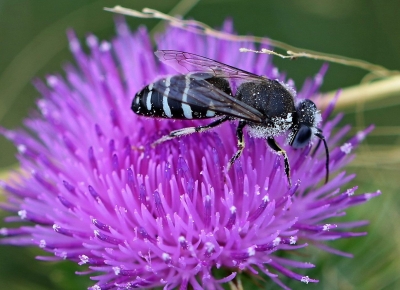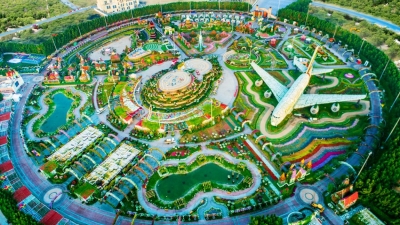WHAT ARE PLANT POLLINATORS? WHY DO FLOWERING PLANTS NEED THEM?

Pollination is an essential part of plant reproduction. Pollen from a flower's anthers (the male part of the plant) rubs or drops onto a pollinator. The pollinator then take this pollen to another flower, where the pollen sticks to the stigma (the female part). The fertilized flower later yields fruit and seeds.Flowering plants have a number of tricks in their armoury to attract pollinators, whether they are birds, insects, reptiles or mammals. Let’s look at some of the pollinators.
Hummingbirds and Sunbirds
Flowers that hummingbirds and sunbirds favour are day-blooming, tube-shaped. bright orange or red in colour and have little fragrance. Their nectar is 26 per cent sugar, double the amount in a soft drink. The shape forces the bird to delve deep, brushing its head against the stamens which drop their load of pollen.
Sunbirds like to perch while feeding so their favourite plants provide them a stalk to sit on. The rats tail plant of South Africa has a vertical one that provides a convenient foothold for the malachite sunbird while it samples the nectar. Scientists have found that plants with perches have double the number of sunbirds visiting them.
Lizards
On tiny oceanic islands, lizards pollinate the flowers! The blue-tailed gecko is partial to the nectar of the Trochetia flower on the island of Mauritius. It prefers the flowers that grow underneath the pandanus shrub since it shields the lizard from birds of prey. Trochetia plants have over time, evolved to grow in the shelter of the pandanus!
Moths and Butterflies
Hawk moths visit flowers that bloom at night or at dawn or dusk, times at which they are active. The flowers are generally large, showy, and sweetly fragrant. are white in colour and have lots of nectar.
Flowers visited by day-flying moths are smaller, have less nectar and grow in heads rather than individually.
Butterfly-pollinated flowers are similar to the hawk moth-pollinated ones and have petals that provide a landing area. Their nectar is hidden inside narrow tubes which are a perfect fit for a butterfly's proboscis.
Bees and Wasps
Beers are of course, the supreme pollinators, but wasps are not far behind. Some fussy plants demand special attention. Tomato flowers have anthers that will only release pollen if they are vibrated briskly by the whirring wings of the bumblebee! This is called buzz pollination Honeybees are not so good at buzzing!
Fig trees display the ultimate in finicky behaviour. Each species of fig depenits on its own kind of wasp for pollination. A figs flower grow inside the fruit. The female wasp makes a small hole and squeezes inside. Once in, she feeds on the nectar and lays her eggs. When the eggs hatch the new generation of wasps fly to another fig tree. pollinating it in the process.
Bats
Flowers pollinated by bats are flamboyant and white or light-coloured since their visitors are nocturnal like the moths. They are generally bell-shaped and strong smelling. Their pollen grains are bigger and they produce nectar throughout the night Bats pollinate more than 300 species of fruit bearing plants including mangoes, bananas and guavas. Some species of bats sport proboscis-like tongues and have the ability to hover. They also use echolocation to find certain types of flowers.
Lemurs
The world's largest known pollinator is the ruffed lemur of Madagascar. It has dexterous fingers that can peel open the hard coating on the flower of the travellers palm. Once open. the lemur pushes its long snout into it to lap up the nectar. The lemurs depend on these flowers when fruit is scarce. Scientists think the palm's flowers evolved to be pllinatd only by this species of lemur.
Flies
The smelliest flowers around have a corpse-like smell of decay that is immensely attractive to flies. Two of the largest flowers in the world, the rafflesia and the titan arum are pollinated by flies. The paw-paw, a fruit native to the US... depends on flies for pollination Farmers hang rotten meat from the tree to draw in even more of them.
Picture Credit : Google
